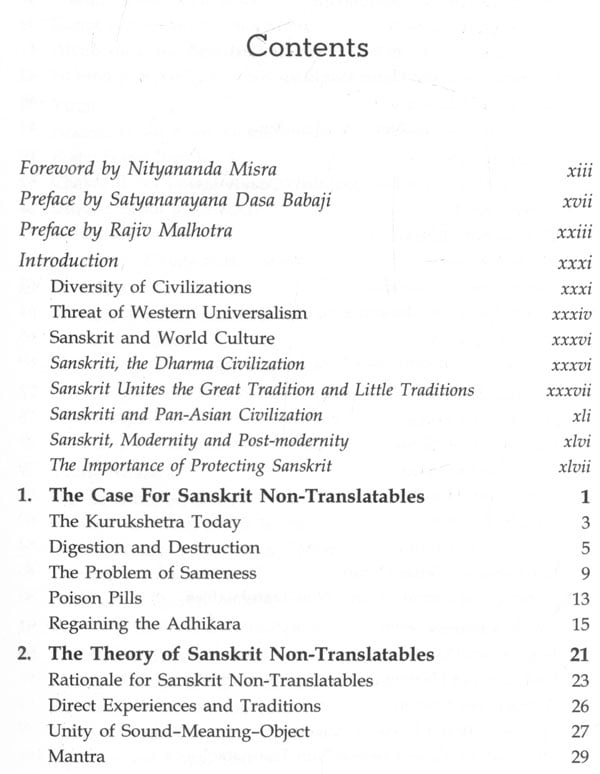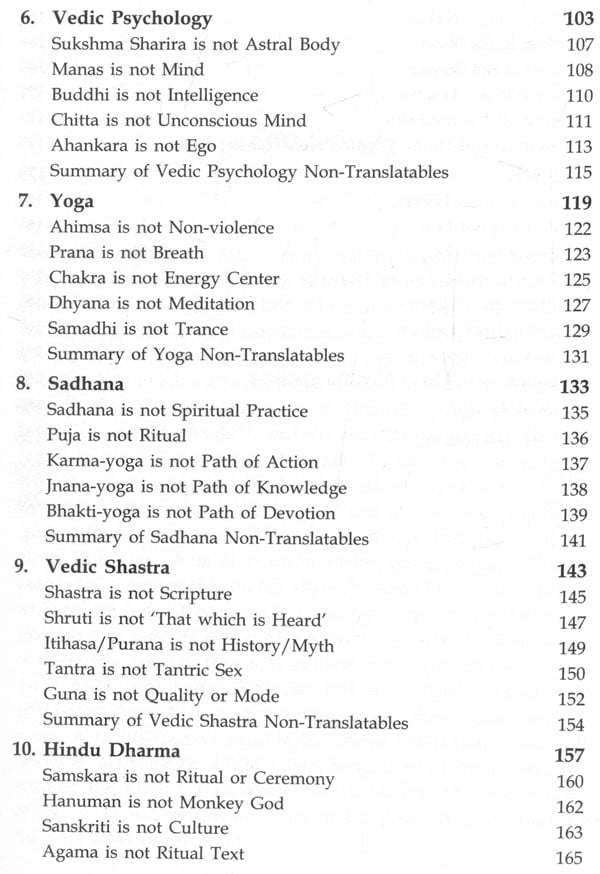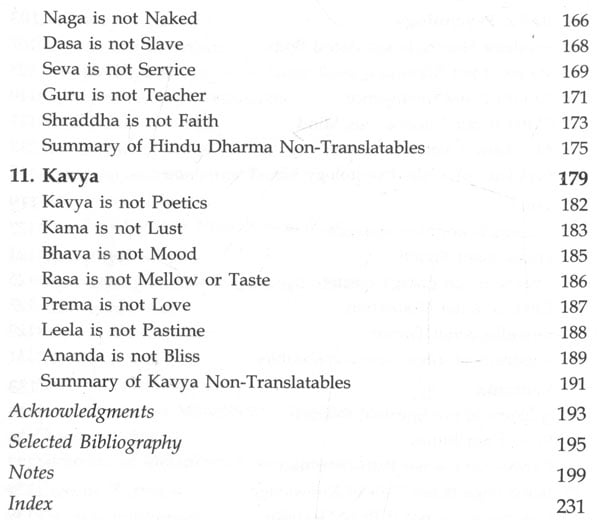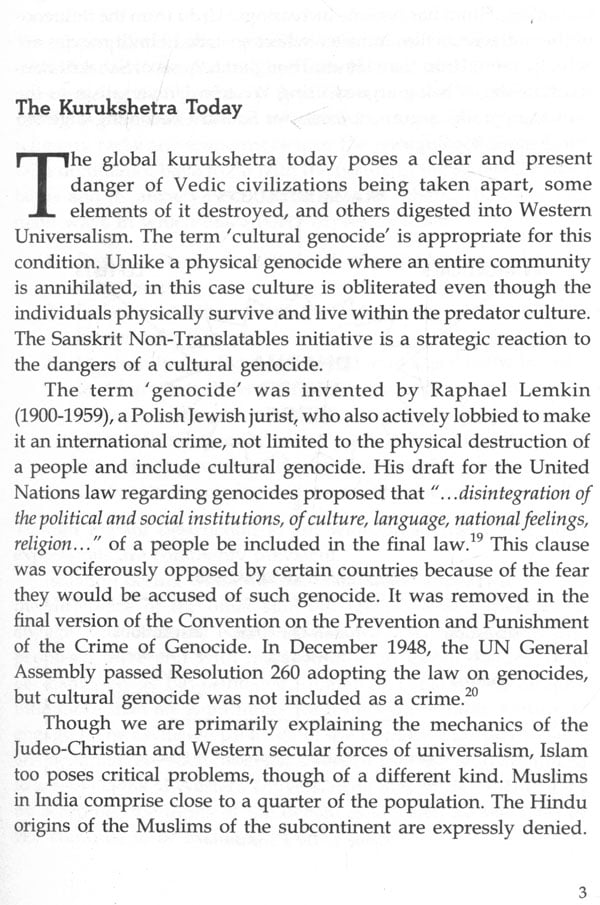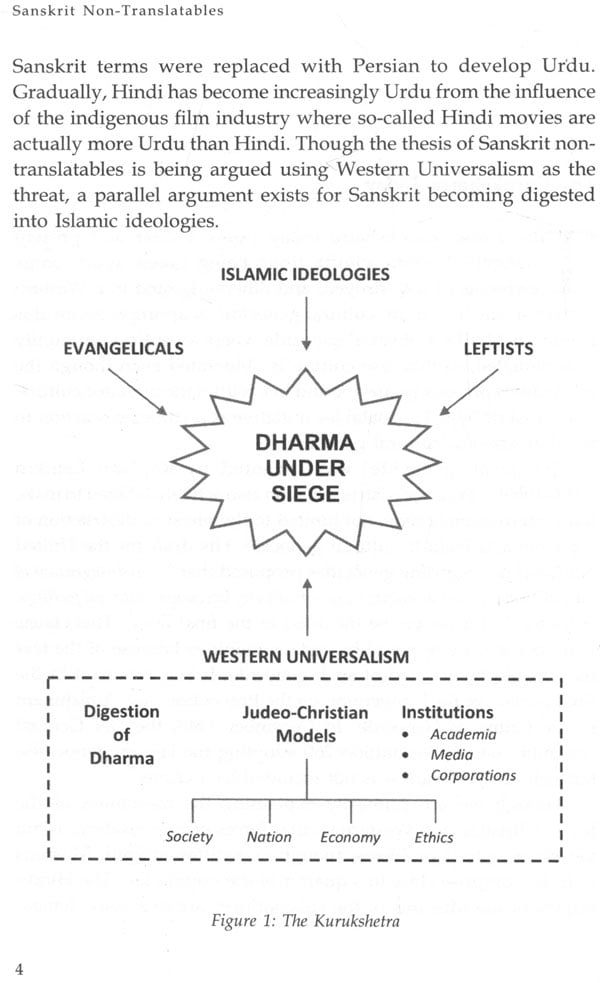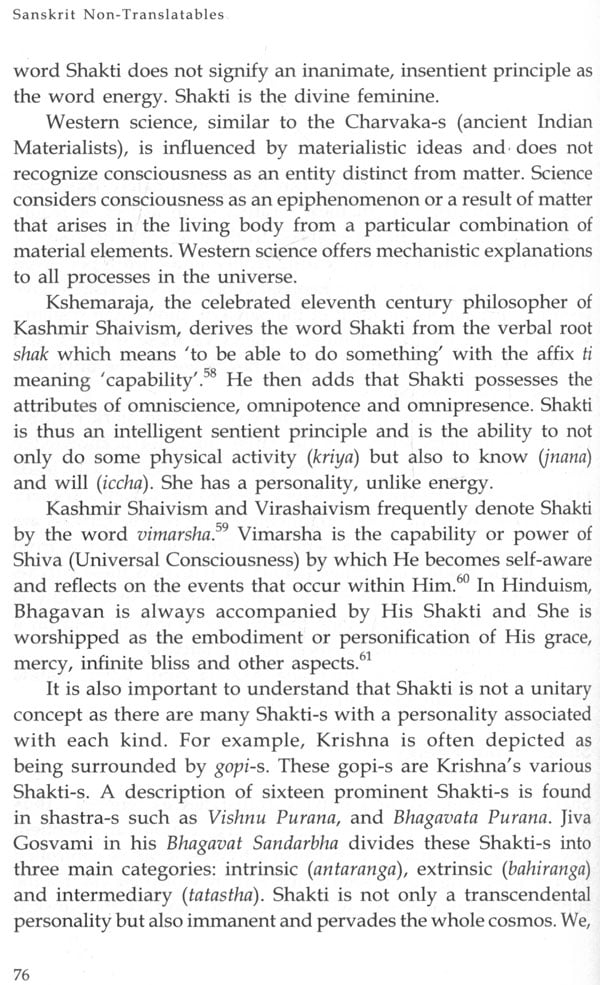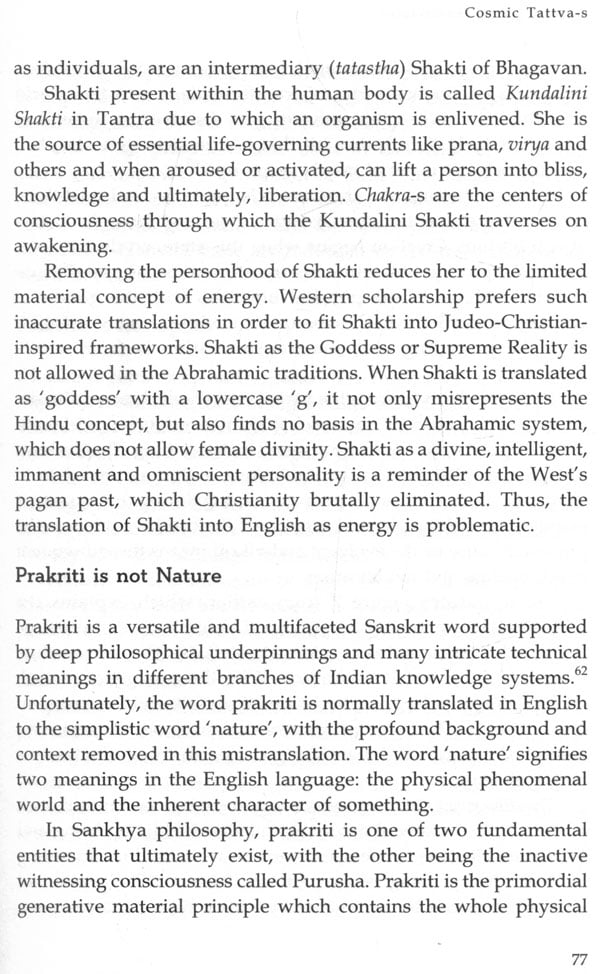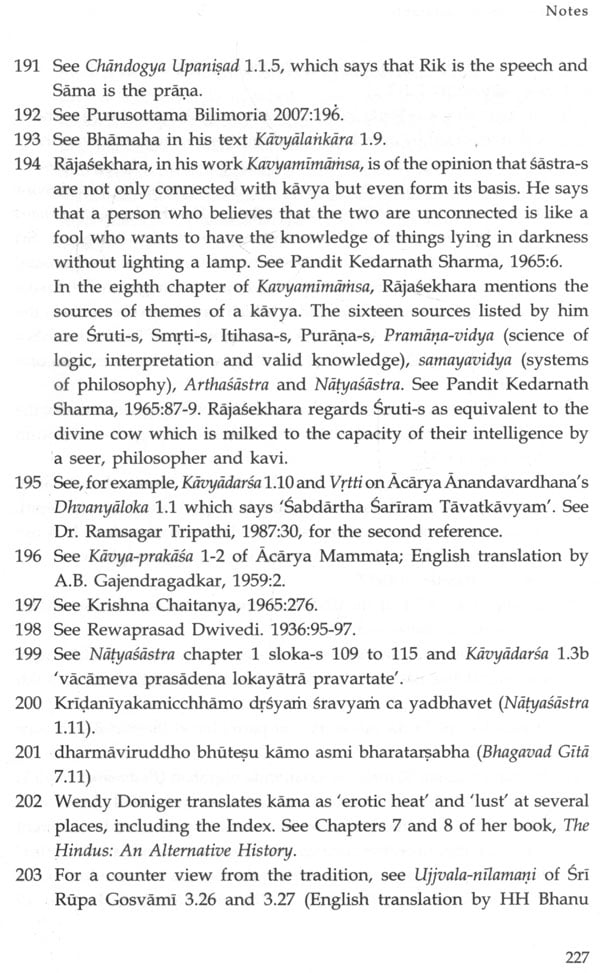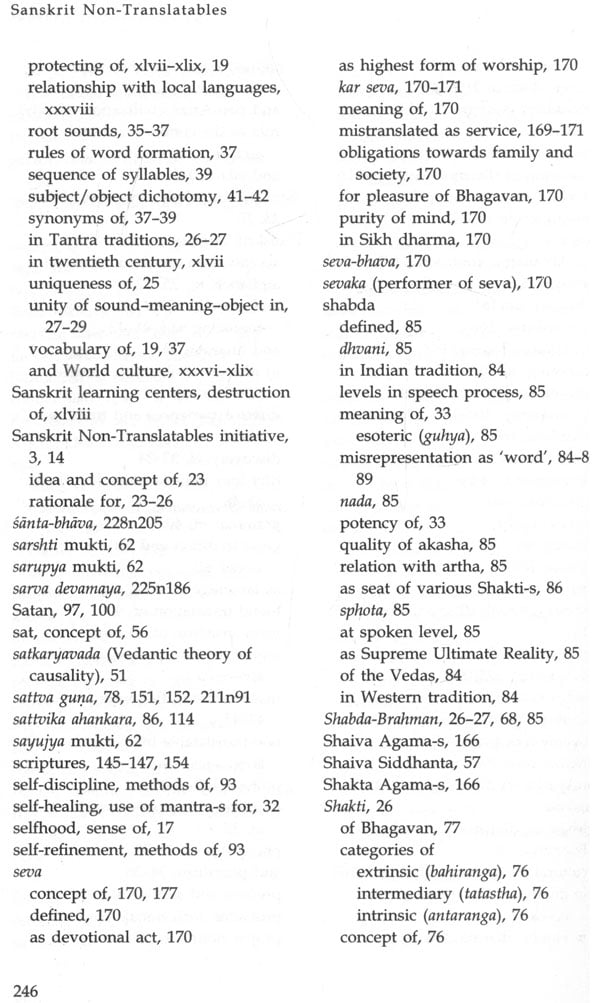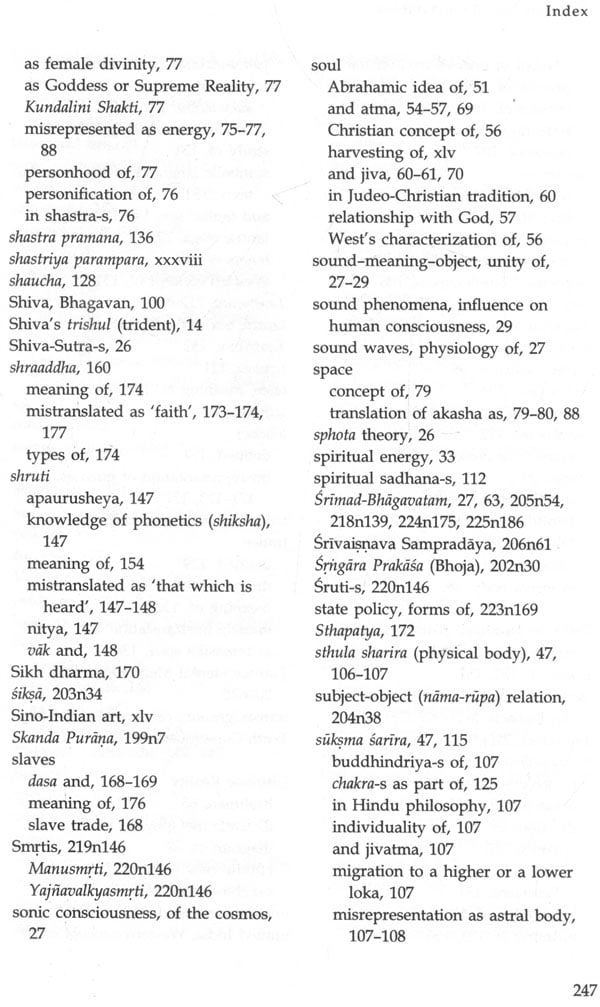
Sanskrit Non-Translatables - The Importance of Sanskritizing English
Book Specification
| Item Code: | NAY388 |
| Author: | Rajiv Malhotra and Satyanarayana Dasa Babaji |
| Publisher: | Amaryllis |
| Language: | English |
| Edition: | 2020 |
| ISBN: | 9789390085484 |
| Pages: | 294 |
| Cover: | HARDCOVER |
| Other Details | 9.00 X 6.00 inch |
| Weight | 500 gm |
Book Description
The book presents a thorough mechanism of the Process of digestion and examines the loss of adhikara for Sanskrit because of translating its core ideas into English. The movement launched by this book will resist this and stop the Programs that to Sanskrit into a dead language by translation all its treasures to render it redundant Discuss fifty-four non-transaxle groins genres that are being commonly m translated. It empowers English speak with the knowledge and arguments to introduce these San. words into early speech with confidence. Every lover of India' Sanskrit will benefit from the book and become a cultural amba door propagating it rough routine communication.
His includes software development, being a Fortune 100 senior corporate executive, a strategic consultant, and a successful entrepreneur in IT and media industries. At the summit of his career, he globally controlled twenty technology companies. He retired at the age of forty-four to work full-time in philanthropy, research, and public service. Rajiv founded infinity Foundation in Princeton (USA) in 1994 and conducted original research in myriad fields, influencing thinkers worldwide.
Rajiv’s works include The Battle for Sanskrit, Breaking India, Being Different, Indra’s Net, and Academic Hindu phobia.
Satyanarayana Dasa Babaji, PhD, is a Vaishnava scholar and practitioner. He is the founder of Jiva Institute of Vedic Studies, which promotes Vedic culture, philosophy, and several important publications in many prestigious journals.
Dr. Dasa serves as a visiting professor at the State University of New Jersey, Rutgers, and the American Hindu University. He was honored by the former president of India, the late Dr. Pranab Mukherjee, for his extraordinary contribution towards presenting Vedic culture worldwide.
In this much-needed and pertinent book, Rajiv Malhotra and Satyanarayana Dasa Babaji detail fifty-four Sanskrit words from nine themes with their common English translations and highlight what the English translations fail to capture. The authors 'make a compelling case for using Sanskrit words as is in English translations. Rajiv Malhotra had introduced this concept in his book Being Different: An Indian Challenge to Western Universalism, and has highlighted the need for Sanskritization of English for a long time. Satyanarayana Dasa Babaji is a traditionally trained Sanskrit scholar who has translated important texts like the Bhagavad Gita and the Sandarbha works of Srila Jiva Goswami into English. They offer insightful views into etymologies and ranges of meanings of important Sanskrit words and how their common English translations fail to capture the essence of the original words.
Consider the example of the word maya, which is commonly translated into English as 'illusion'. The authors point out that besides maya being a 'wondrous Shakti of Bhagavan', in some traditions; it is the cause of illusion and not illusion per se in the Advaita Vedanta tradition. Having learned the concept of maya in my childhood from both Hindi and Sanskrit sources, I am aware that another meaning of maya is kripa (loosely translated as 'compassion'), as attested by the Anekartha-sangraha of Acharya Hemachandra (medieval Jain scholar and polymath) and as cited in the work Bhakti-Sudha by Karapatri Swami (a guru in the Advaita Vedanta tradition). Thus, 'illusion' or 'deception' is only one of the many meanings of the word maya (Acharya Hemachandra lists four meanings in the Anekartha-sangraha) and translating maya as 'illusion' reduces a word with many shades of meaning to a single narrow meaning. The authors draw our attention to a plethora of other such mistranslations. For example, advaya-jnana is more appropriately translated as 'non-dual consciousness' and not 'monistic consciousness'.
The thinkers of ancient India, the rishis and munis, had a deep understanding of the fact that the universe functions on some basic principles of rhythms of the cosmos known as sritam, and to maximize well-being, humans must exist in harmony with it. To this end, human life was organized at two levels: individual and social. Further, at the individual level, human life was considered in four parts: brahmacharya, grihastha, vanaprastha, and samnyasa. Considering a life span of one hundred years, twenty-five years were allocated to each stage of life. In order to be in harmony with sritam, an individual, as well as a society, must strive for the four pursuits known as purushartha-s: dharma, artha, kama, and moksha.
Each individual possesses unique characteristics, known as his/her prakriti or nature. According to ideal dharmic social thought, an individual functioned in society in line with his prakriti and was provided with appropriate education. At the collective level, society was organized into four broad categories called varnas: brahmana (teacher/educator), kshatriya (warrior /king/ queen), vaishya (manager/business sector), and shudra (service sector). The varna was not birth-based but was dependent on the individual's acquired prakriti. Every society, which functions as an organized unit, comprises these four unavoidable categories for its sustenance, propagation and prosperity. While these categories have emerged unconsciously all over the world, ancient Indian thinkers recognized it and provided a theory supporting the four varna-s to consciously organize society. Indian society was based on this template and functioned peacefully for thousands of years, scaled paramount heights and attained much glory.
Historically, many great personalities appeared to rectify the situation whenever balance was disturbed. Bhagavan Shri Krishna himself proclaims that He is the propagator of the varna system (Gita 4.13), and He appears to restore dharma whenever it is challenged by adharma (Gita 4.7).
This ancient system, however, started crumbling when Indian society was invaded by Western forces, primarily with Alexander around 324 BCE. Thereafter, it experienced a downward spiral though its resilience was not completely eliminated. Even when India came under foreign rule, around 1192 CE, and later, under the prolonged rule of the Mughals, its education system was not tampered with and the varna-s survived. The fatal blow came in 1854, when the Indian education system was callously destroyed by the British. It was replaced by the Western education structure to produce clerks to help them control the vast empire. Unfortunately, Western education has no such insight into human life, leave alone the cosmic sritam. Tragically, even post India's independence in 1947, no efforts were made to reclaim the millennia-old heritage. Instead, what continue to this day are the borrowed education system and the constitution of the West, which are a complete mismatch for the Indian psyche.
Book's Contents and Sample Pages
